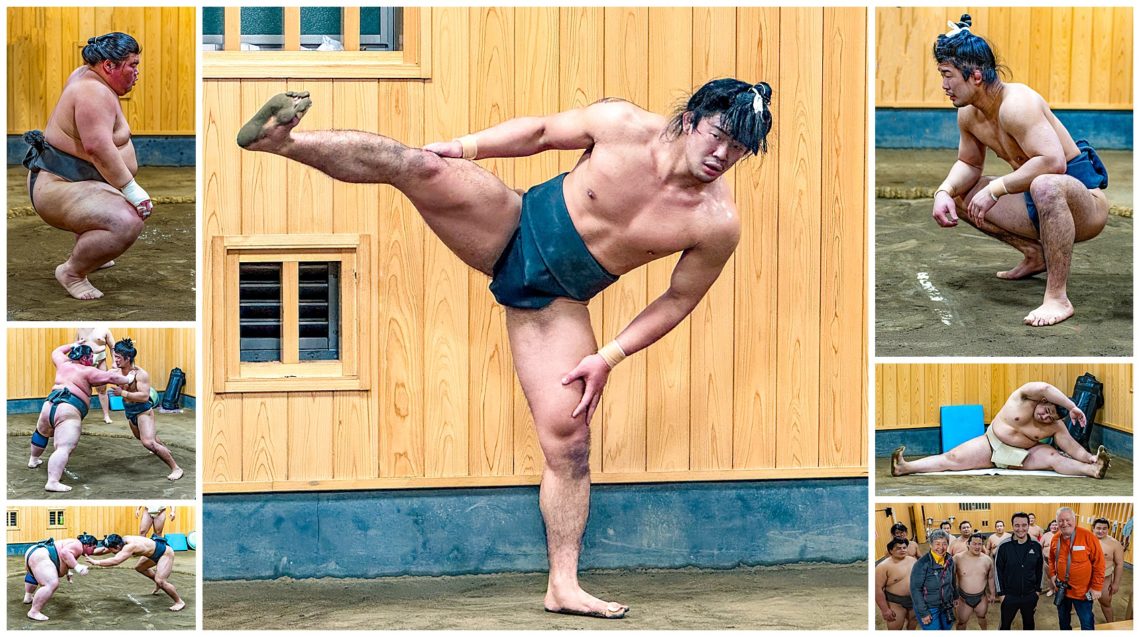
Enroute to India, there was a one stop with an 18-hour layover in Tokyo going across the Pacific Ocean, or a multi-stop route from HNL-LAX-JFK-DEL across the Atlantic Ocean. Each route took more than 30 hours. Since it was Burt’s birthday, we decided to celebrate by laying over and exploring Tokyo. We’ve fallen in love with Japan after spending only 4 days in Tokyo.
The first stop on Burt’s birthday was to watch a sumo wrestling training session in an authentic Sumo Stable in Oshiage. Sumo is Japan’s national sport and a form of martial arts. The training is quite rigorous. It starts early in the morning, follows a set of rituals, a complex set of behavior, and intense exercise routines. There are also matches, which are fought within a 15′ circle. The winner either pushes his opponent out of the ring, or forces an opponent to have any part of his body other than his feet touch the ground.
We had envisioned all sumo wrestlers weighing more than 300 pounds and being quite obese. Though sumo wrestlers eat more than 7000 calories a day, they have low cholesterol levels, don’t suffer from heart attacks, strokes or other typical signs of obesity. The owner of this stable (bottom right), was ranked no. 2 in the top division, yet he is quite slender. The man who won many of the practice sessions we watched was also quite muscular and thin (upper-right and middle). There are no weight classes in sumo, unlike boxing. The strongest wins, no matter what his weight, and can easily be paired off against someone many times his size.
There are 6 divisions in sumo, with ranking determined solely by their win-loss record. Sumo wrestlers start training at age of 15 and retire by the age of 30. There are 6 tournaments a year, on every odd month, and the number of wins in these matches determine the ranking. There are 44 sumo stables in Tokyo, and 800 professional sumo wrestlers worldwide.

For Burt’s birthday week, we also explored the historic side of Tokyo in the charming neighborhood Yanaka Ginza. It is filled with many tiny shops and eateries, shrines, and alleys, and has much character. This area is also known for their cats, and a great place to shop for souvenirs and great place for a coffee or tea stop.
We were impressed how clean the city was. We did not see trash on the ground, nor any graffiti, There are no public trash cans, and it is expected that “if you can carry it full, then you can carry it back home empty.” Everything was well maintained.
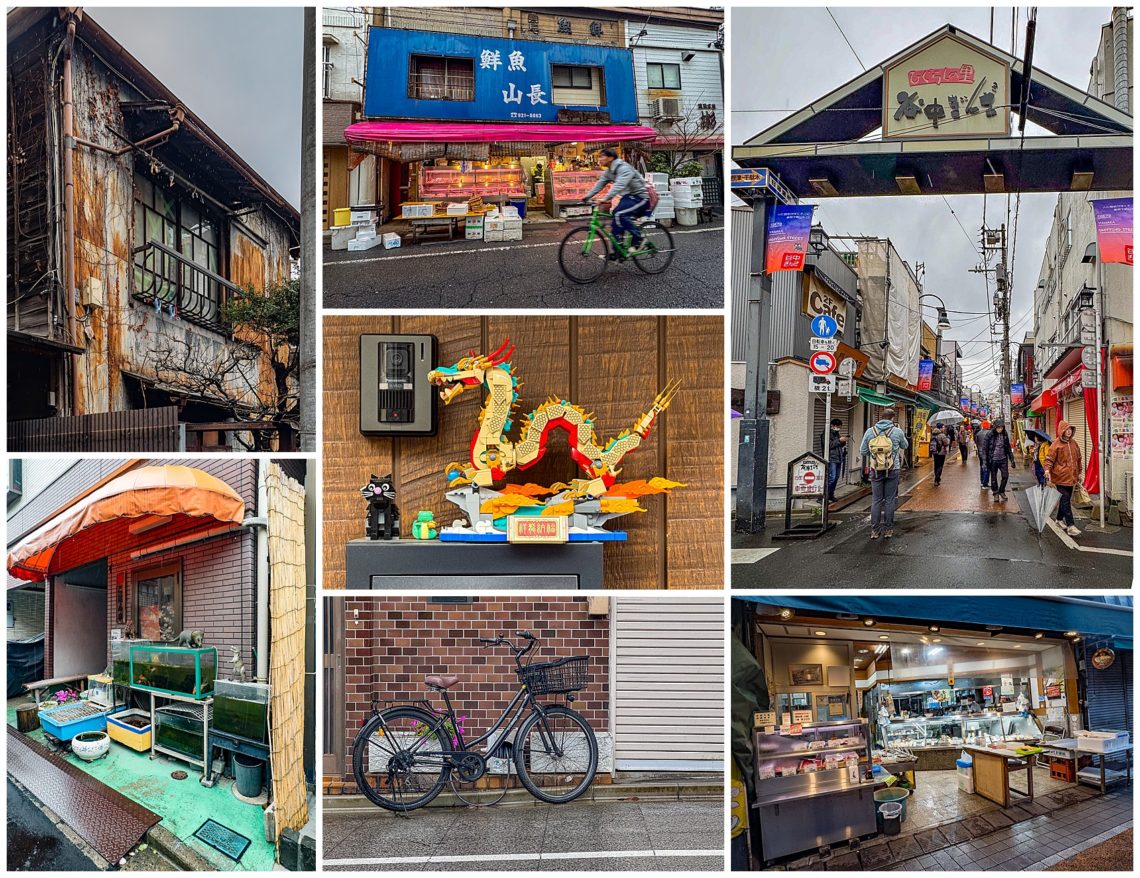
Whenever we travel to a major city, we enjoy going on walking tours. To explore Tokyo, we found a group of locals who created some unique itineraries, including this tour of Yanaka.
It was surprising to us how little English was written or spoken around Tokyo. Even the names of bus stops, metro lines are all written in Japanese Kanji characters. We were able to get around with Google Translate though, even giving directions from Google Map to the taxi drivers.
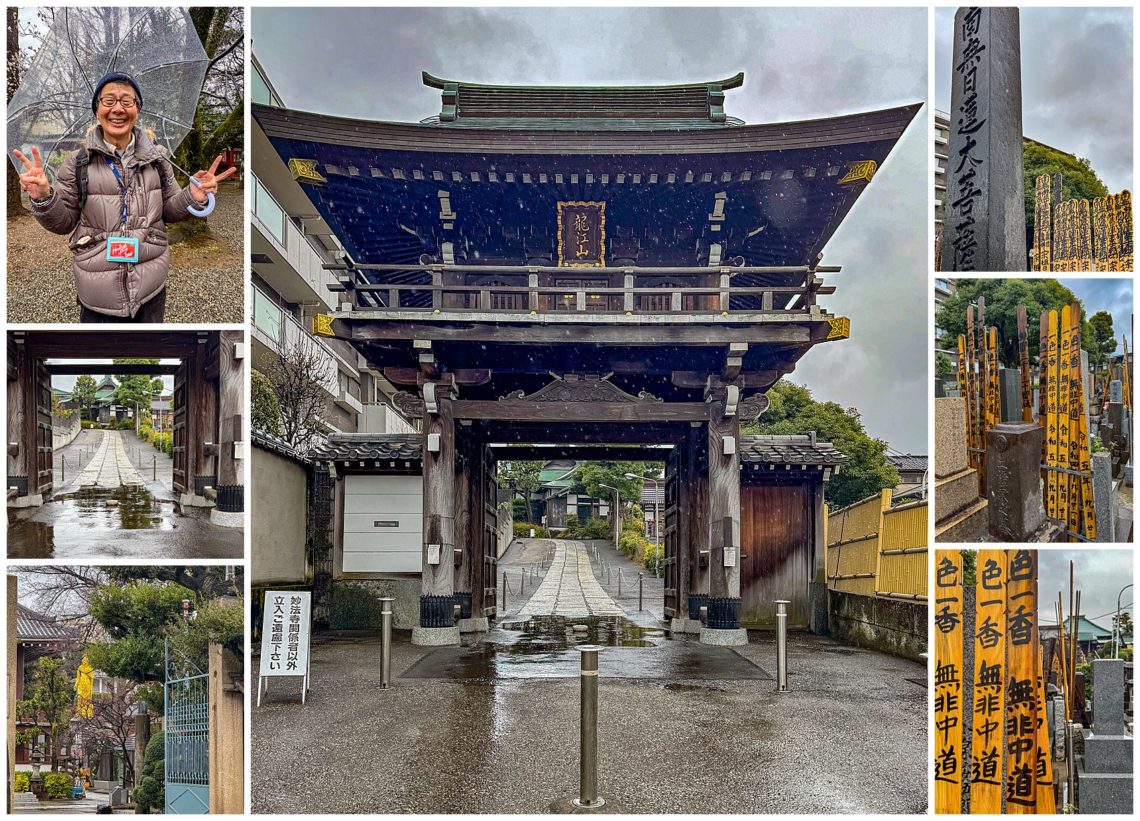
On our walking tour of the older part of Tokyo, we stopped at this shrine and cemetery (right column).
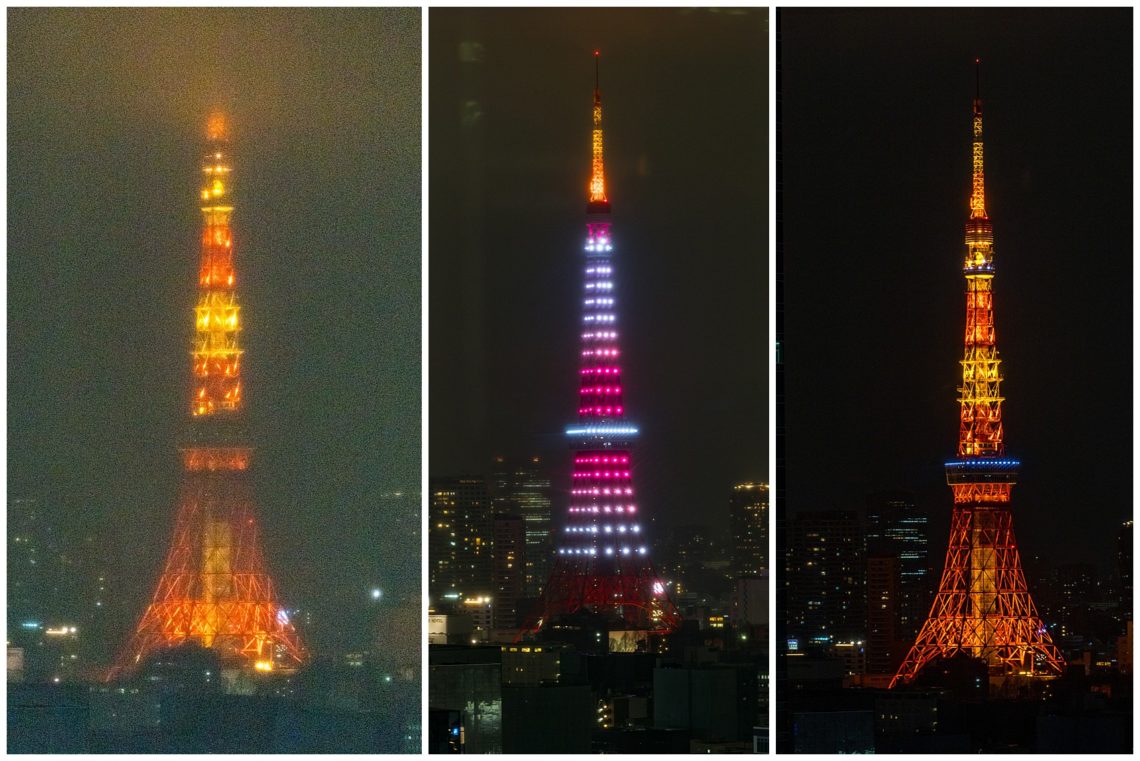
This is a view of the Tokyo Skytree from our hotel bathroom (yes, the hotel boasts of its view of the tower from the bathroom!). The lighting of the radio tower changes color during the night.
We were shocked to find how cold it was in Tokyo at this time of year. It rained every day and the forecast was for snow one day when we visited, which is why the left image above is shrouded in mist from the rain of the first night. Fortunately there was one clear night, which allowed us to capture the other two images of the tower.
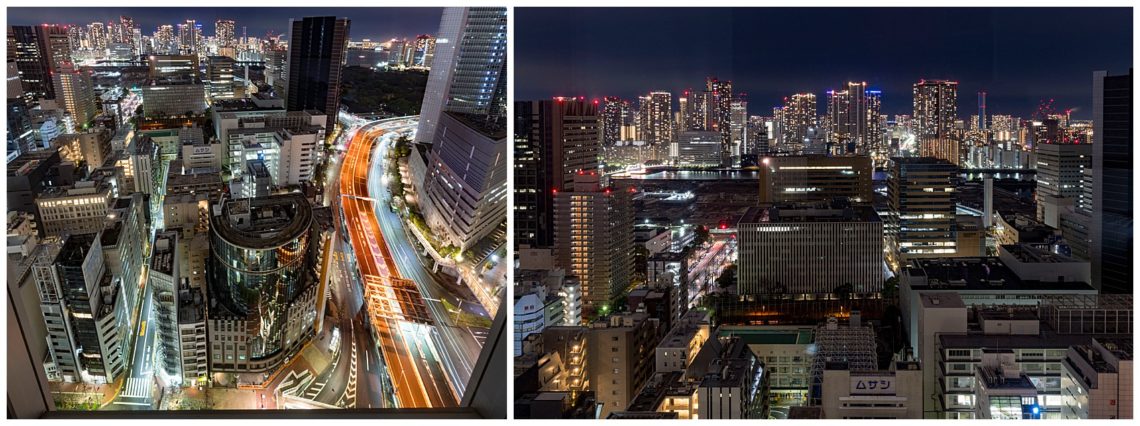
The main bedroom of our hotel provided a view of the city skyline and the main elevated road below. Downtown is filled with high rise buildings and traffic can get quite congested.